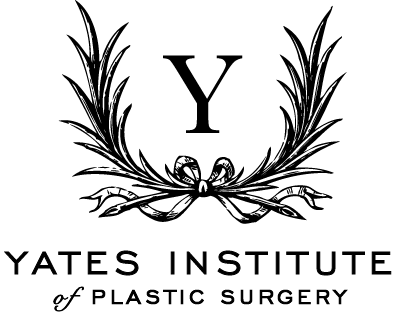The ABCs of Brachioplasty
Brachioplasty surgery targets both women and men who have excess skin and fat on the arms. Arm lifting can be done for several reasons. If you just want a little contouring of the shape of the arm, you may need only liposuction, but if you lost a lot of weight and you have excess skin, or you are not in your early youth and the skin is soft and lose you can benefit from this procedure.
What is Brachioplasty, and when can you resort to this body remodeling operation?
Also known as brachial dermo lipectomy, Brachioplasty is the medical term that describes the lifting of the arms and the reduction of the circumference of the arms. Brachioplasty is an elective surgery that aims to reshape and improve the shape and contour of the hands by removing excess skin and fat, affected by ptosis and sagging, in the brachial triceps (upper arm).
Aging and sudden weight loss cause loose, flabby skin due to the loss of elasticity and volume in the adipose tissue. In most cases, people resort to Brachioplasty for aesthetic reasons, but sometimes this problem can lead to a severe deformity of the shape of the arm, restricting movement and interfering with the use of the arms in certain activities.
Brachioplasty can also be a solution for those whose cellulite has been stored in the arms, and diet and fitness have not given the expected results over time. However, Brachioplasty is most often requested by bariatric surgery patients, which requires a reshaping of the skin that hangs unsightly due to the loss of a large volume of adipose tissue.
Who is an eligible candidate for Brachioplasty?
Brachioplasty is made for people who suffer from ptosis of the skin folds, unsightly or due to unsightly cellulite located on the arms. Those who want an enhancement of the appearance of the arms and the upper part of the chest (near the armpit) may also use Brachioplasty.
Other eligible patients for Brachioplasty are those looking for a way to rejuvenate their arms due to the effects of aging and loss of skin elasticity or the people who need to remove excess skin and fat resistant to diet and exercise. Patients who meet the above conditions but also require liposuction to suck fat and smooth skin flaps are also eligible.
Patients must have a stable weight and not be overweight.
Who is not eligible for Brachioplasty?
women who have previously undergone a mastectomy operation
patients who suffered infections in the armpit area or excessive production of secretions of the sweat glands or infections of the sweat glands;
patients who underwent interventions to remove lymph nodes from the armpit.
patients who consume alcohol and tobacco products.
The Brachioplasty Surgery
A brachioplasty is a surgical procedure that involves the administration of general anesthesia or local anesthesia combined with intravenous sedation. Liposuction is performed where needed, and so is the excision of excess skin and stretching and the repositioning of the remaining skin for a natural, smooth, firm, and young contour.
The patient does not require hospitalization, and the surgery duration is 2-3 hours.
Incision options:
-the inner part of the arm (medial area of the arm) from the elbow to the underarm;
-the inner part of the arm, towards the back, also from the elbow to under the armpit;
- the incision extended from the elbow to the sides of the chest, the transition from the armpit being made through a zig-zag incision to prevent hypertrophic scarring, skin tightening, and the formation of scar bands.
-small incision, following the natural crease of the underarm.
The excision involves the following steps: Initially, the deeper layers of the tissues are excised and repositioned, then the superficial ones. The excised flap has an ellipsoidal or triangular shape, and the shape of the incision is T-shaped. The remaining adipose tissue will cover and protect the nerves and arteries, liposuction being a form of the sculpting of the adipose tissue.
Brachioplasty surgery results
By removing the skin, the arm lift can give the upper arms a more toned appearance. The results are usually long-lasting. Remember, however, that your skin will naturally lose some firmness as you age. Maintaining a stable weight can help you maintain results.
The new arms contour is well proportioned and toned, visibly improved, and palpable.
Depending on the patient's age at the time of surgery, the results can be long-lasting, but this depends on whether the patient is well-maintained, has a healthy diet, and a regular sports program. Massage also helps maintain results.
The resulting scars are not considered mature until 1-2 years after surgery and are not usually observable. Otherwise, a revision of the scars is performed after their maturation.
Final words
Before making a decision to undergo this procedure, you should talk to your doctor about your medical history, history of diseases such as diabetes, thyroid disorders, blood pressure, cardiovascular disease, or other circulatory disorders. The doctor should also analyze information about the history of surgeries, administration of drugs, consumption of supplements, vitamins, or the consumption of alcohol, tobacco, or drugs, as these can affect the healing process and ultimately the final results.
During the consultation, the health condition is evaluated (possible diseases, allergies, usual medicines used). Subsequently, blood tests are recommended.
Contraceptives should be stopped 4-6 weeks before the surgery because they increase the risk of thromboembolic complications (blood clots).
It is also recommended to stop smoking at least one month before the surgery or at least to considerably reduce the number of cigarettes smoked per day (smoking makes the healing process difficult, and complications can occur).
It is recommended to avoid anti-inflammatory drugs (Nurofen) or aspirin (as it promotes bleeding) at least 14 days before the surgery.
The surgery is not performed during the menstrual period.
Avoid excessive exposure to the sun or solarium before surgery.
On the day of the surgery, you must not consume food and liquids at least 6 hours before it starts.
It is recommended to avoid gel nails or dark colors (because they interfere with anesthesia machines) and body creams on the morning of the surgery.
Brachioplasty is elective surgery. That is why patients must have realistic expectations and focus on the idea of improvement rather than perfection.


